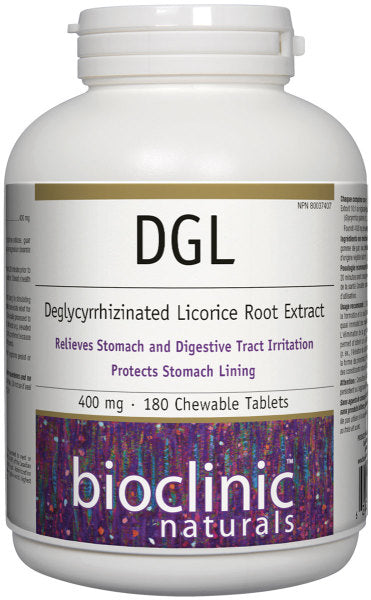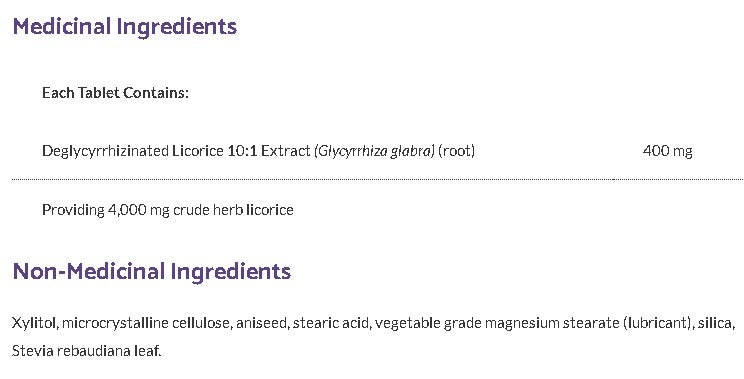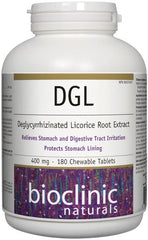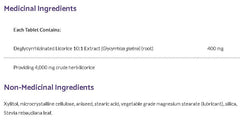



DGL · 400 mg
- 23.99$
0.00$- 23.99$
- Unit price
- per
Description
x- Provides DGL in chewable tablet form, the form associated with the greatest clinical efficacy, as it allows the licorice to be released in the stomach and dispersed/absorbed through the gastric mucosa.
- Provides 400 mg of DGL per tablet, the clinically effective dose.
- Deglycyrrhizination prevents adverse effects associated with licorice consumption.
- Pleasant-tasting tablets for better compliance
- Suitable for vegetarians/vegans
Deglycyrrhizinated licorice, or DGL, has been used clinically for decades, primarily for the treatment of peptic ulcers. Licorice contains numerous triterpenoids and hundreds of flavonoids that have been shown to inhibit several inflammatory enzymes, including cyclooxygenase-2 (COX-2) and 5-lipoxygenase (5-LOX). These enzymes decrease the production of several potent inflammatory compounds, including IL-6, prostaglandin E2, thromboxane B2, and leukotriene B4. Importantly, this inhibition is not primarily due to glycyrrhizic acid, the component of licorice that was removed in DGL and is associated with mineralocorticoid excess and hypertension. Licorice contains numerous active compounds with anti-inflammatory, antimicrobial, and anti-allergic properties, including glabridin and at least seven licochalcones. These compounds have been shown to prevent lipopolysaccharide (LPS)-induced production of inflammatory compounds, inhibit yeast and bacterial biofilm formation, and stimulate antioxidant enzymes.
Clinically, DGL has been shown to be comparable in efficacy to cimetidine for ulcer healing and prevention of recurrence. Furthermore, licorice extracts have been shown to inhibit H. pylori adhesion to the gastric mucosa, as well as the growth of antibiotic-resistant strains, suggesting multiple mechanisms of action for its antiulcer effect. The use of chewable tablets appears necessary for the efficacy of DGL, as they allow distribution and absorption through the gastric mucosa.
Produits recommandés
Produits récemment consultés
- Choosing a selection results in a full page refresh.



